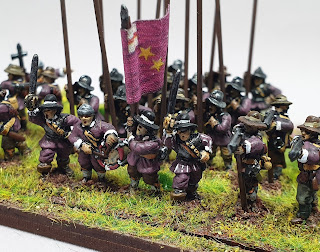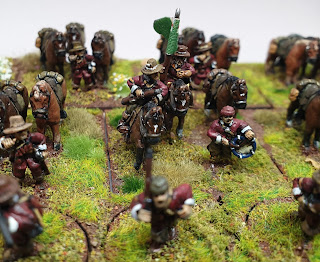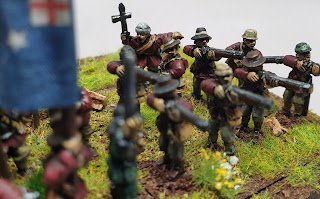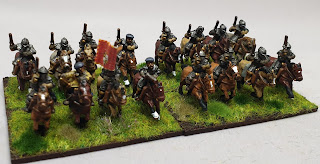Lord Saye and Sele's Regiment of Foot
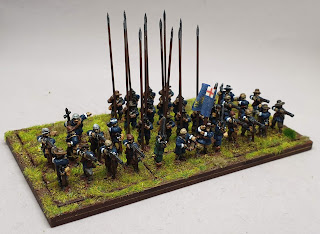
Another briefly mentioned regiment gets it's fifteen minutes of fame. Originally I had them labelled as Colonel Edward Aldrich's Regiment of Foot I realised that they were in fact flying the colours of Lord Saye and Sele's Regiment, albeit with an incorrect pattern of devices. Aldrich's Regiment grew out of Lord Saye and Sele's so they were sort of vaguely right but the level of wrongness bothered me. Lawks amercy guv'nor! I'm becoming a button counter! Brushwork on these by Alan Tuckey, basing by my own fair hand. So they now sport a new movement tray, and correct colours for the third captain's company of Lord Saye and Sele's Regiment of Foot. Raised in 1642 they fought at Edgehill, were besieged at Banbury and were present at the Turnham Green standoff. Late in 1642, Sir John Meldrum took over command as Colonel and the Regiment was possibly at Marlow and Wokingham; they were definitely at the First Siege of Newark and we...

